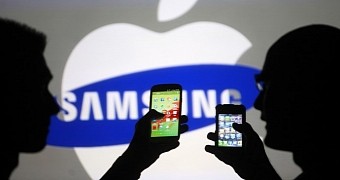It’s not the first time we hear this, so there certainly must be some truth to the rumors. A top Apple analyst says the company to bring fingerprint sensors embedded into the display to the market won’t be Apple, but rival Samsung, which will reportedly equip its next Note phablet with such tech.
Expected to see daylight in the summer of 2018 as Galaxy Note 9, the next Samsung phablet won’t go all-in on facial recognition, as it’s currently the case with Apple’s iPhone X, but offer a mix of iris scanners, facial recognition, and fingerprint sensors using the new technology that makes it possible to embed the reader right into the screen.
Furthermore, it appears that Samsung is already discussing with a series of partners on the new fingerprint sensor, and Korean companies BeyondEyes and the Samsung subsidiary Samsung LSI have already shipped samples for a series of tests, Ming-Chi Kuo, an analyst at KGI Securities, said in a note seen by BI.
This means that even though we’re some 10 months away from the moment the Note 9 could see daylight, Samsung is already testing this feature, so the firm is very keen on making this happen in the future.
Apple failed to create fingerprint sensor in the screen
A fingerprint sensor integrated into the screen is a technology that Apple failed to build for the iPhone X and is one of the reasons the anniversary model is late to the market. Apple has been trying hard to embed Touch ID into the display and even delayed the start of mass production because of this, but the company eventually decided to give up on the idea and launch the all-screen iPhone X with facial recognition only.
Samsung also tested in-screen fingerprint sensors before for the Galaxy S8, but the tech wasn’t ready and the firm decided to go for a classic approach with a reader placed on the back of the phone.
As far as Apple is concerned, it’s not yet clear if the company is still interested in such tech, though it might be forced to depending on how the adoption of facial recognition goes.

 14 DAY TRIAL //
14 DAY TRIAL //